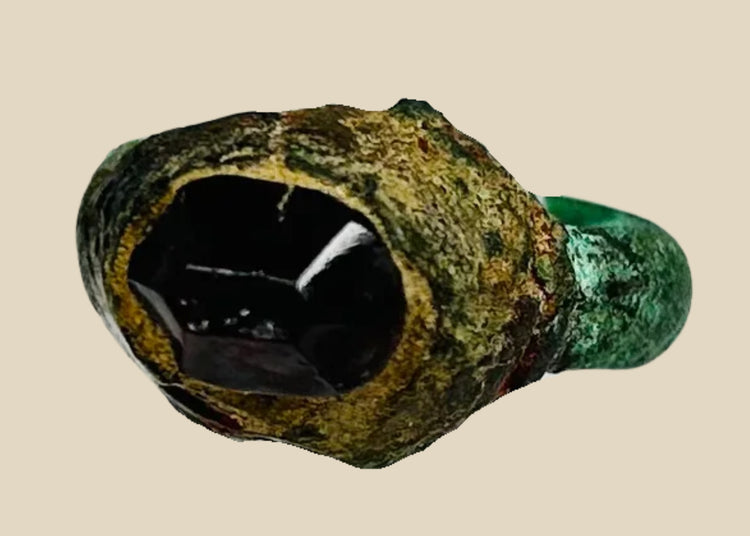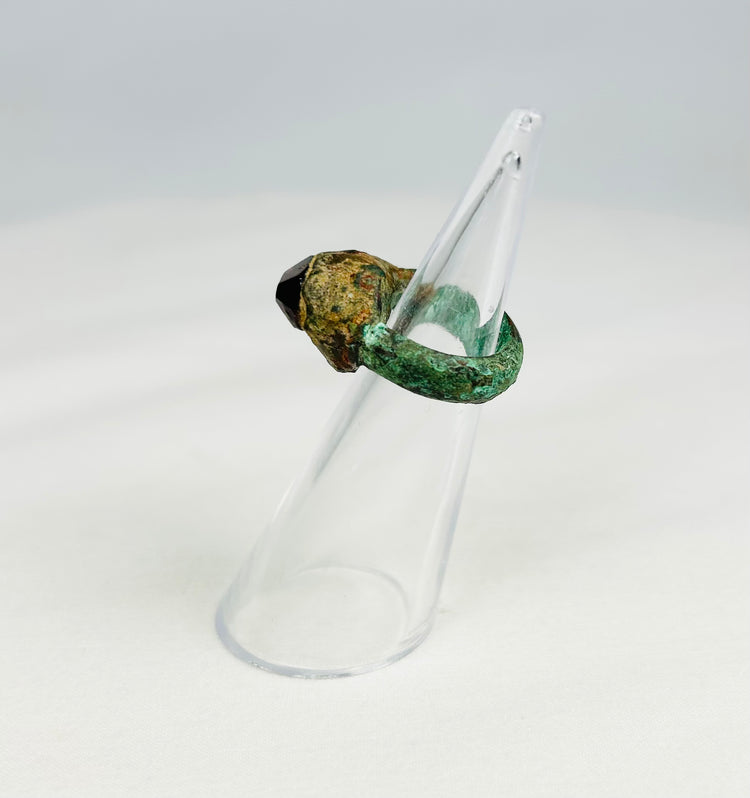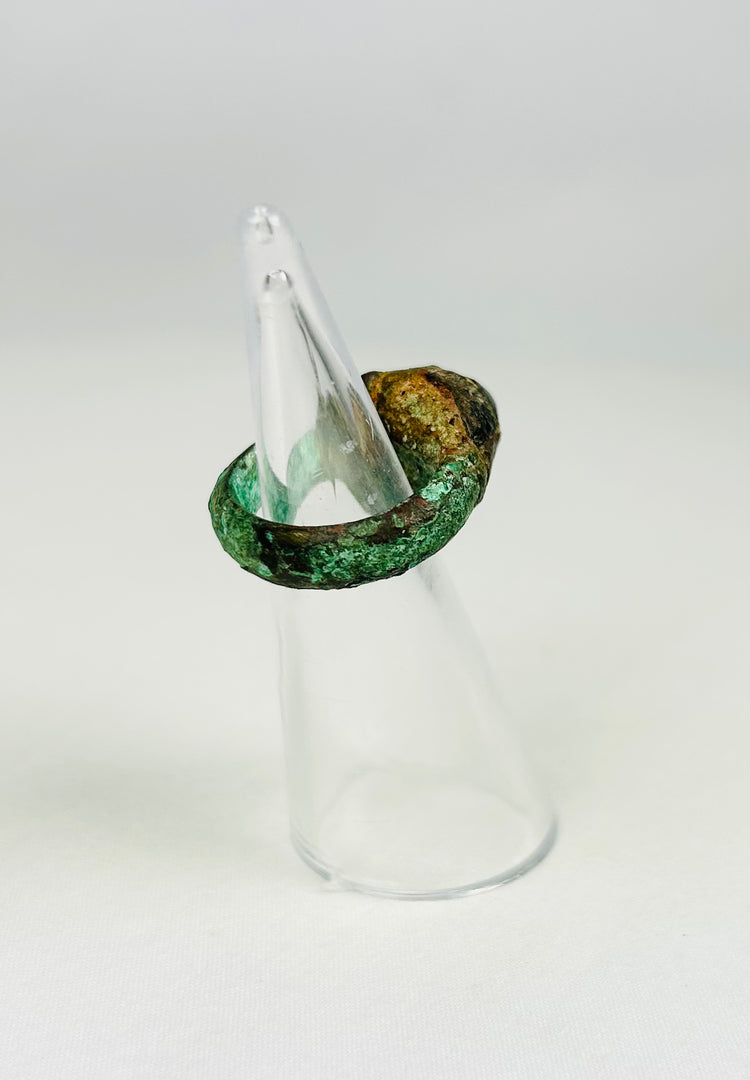Neoasirio | Anillo de bronce con intaglio de granate | Hacia los siglos IX y VII a. C.
Descripción
Más
Menos
Contexto histórico y origen
Región: Imperio neoasirio (actual Irak)
Material: Bronce con intaglio de granate
Periodo: Siglo IX-VII a. C.
Descripción
Este antiguo artefacto es un ejemplo notable de la artesanía neoasiria, con una banda de bronce con una rica pátina verde y un llamativo grabado de granate engastado en un bisel elevado. Este tipo de anillos no solo eran adornos, sino también importantes objetos culturales, a menudo como símbolos de estatus y herramientas prácticas para sellar documentos. El granate finamente pulido, grabado con un diminuto diseño en grabado, refleja tanto la maestría artística como las tradiciones simbólicas del Imperio neoasirio.
Características
- Intaglio de granate rojo intenso con fino grabado, probablemente simbólico o mitológico.
- Bisel elevado que mejora tanto la durabilidad como la prominencia visual.
- Banda de bronce con pátina verde natural procedente de siglos de envejecimiento.
- Combinación de adorno, autoridad y herramienta de sellado funcional.
Importancia cultural
Dentro del Imperio Neoasirio, la joyería era más que un mero adorno: transmitía estatus, poder y una asociación divina o simbólica. Los intaglios de granate solían grabarse con motivos protectores o religiosos, sirviendo tanto como adornos personales como marcadores de identidad. Estos anillos solían ser usados por personas de alto rango, lo que realzaba aún más su prestigio y autoridad dentro de la sociedad.
Condición
La banda de bronce está bien conservada, con una pátina natural acorde con su antigüedad. El granate permanece intacto, pulido y firmemente engastado, con rastros de diseño grabado en calcografía aún visibles. En general, el anillo se encuentra en excelente estado de conservación, lo que realza su rareza y autenticidad.
Dimensiones (aproximadas)
Talla del anillo: 3,25 EE. UU.
Edad
Siglo IX-VII a. C.
Descripción
Contexto histórico y origen
Región: Imperio neoasirio (actual Irak)
Material: Bronce con intaglio de granate
Periodo: Siglo IX-VII a. C.
Descripción
Este antiguo artefacto es un ejemplo notable de la artesanía neoasiria, con una banda de bronce con una rica pátina verde y un llamativo grabado de granate engastado en un bisel elevado. Este tipo de anillos no solo eran adornos, sino también importantes objetos culturales, a menudo como símbolos de estatus y herramientas prácticas para sellar documentos. El granate finamente pulido, grabado con un diminuto diseño en grabado, refleja tanto la maestría artística como las tradiciones simbólicas del Imperio neoasirio.
Características
- Intaglio de granate rojo intenso con fino grabado, probablemente simbólico o mitológico.
- Bisel elevado que mejora tanto la durabilidad como la prominencia visual.
- Banda de bronce con pátina verde natural procedente de siglos de envejecimiento.
- Combinación de adorno, autoridad y herramienta de sellado funcional.
Importancia cultural
Dentro del Imperio Neoasirio, la joyería era más que un mero adorno: transmitía estatus, poder y una asociación divina o simbólica. Los intaglios de granate solían grabarse con motivos protectores o religiosos, sirviendo tanto como adornos personales como marcadores de identidad. Estos anillos solían ser usados por personas de alto rango, lo que realzaba aún más su prestigio y autoridad dentro de la sociedad.
Condición
La banda de bronce está bien conservada, con una pátina natural acorde con su antigüedad. El granate permanece intacto, pulido y firmemente engastado, con rastros de diseño grabado en calcografía aún visibles. En general, el anillo se encuentra en excelente estado de conservación, lo que realza su rareza y autenticidad.
Dimensiones (aproximadas)
Talla del anillo: 3,25 EE. UU.
Edad
Siglo IX-VII a. C.
También te puede interesar






































